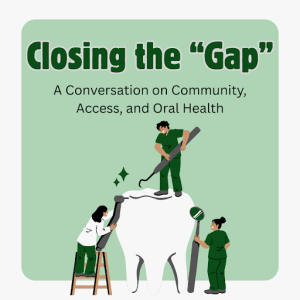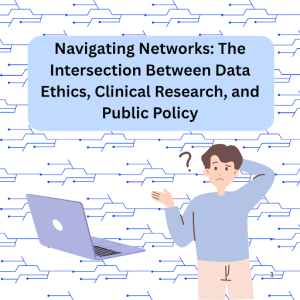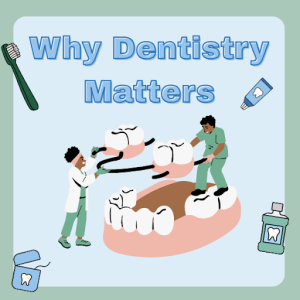By Riley Henry, C2ST Intern, Loyola University
Sitting down in my high school history class sometimes felt like such a chore. It was easy to feel like I would rather be doing a science experiment or solving math problems instead of reading an old history textbook. However, research in educational sciences shows that history is incredibly important despite being often overlooked. Continue reading to understand more about the impacts of learning about history!
Continue reading “The Power of the Past to Teach us About the Present”
By Hayden Nelson, C2ST Intern, University of Chicago
In Chicago and across the world, millions face painful, preventable dental diseases because the system isn’t built to reach them. To understand why dental care matters far beyond the dentist’s chair, and what can be done to close the growing gap in access, I spoke with Dr. Alejandra Valencia, DDS, MPH, MS. As the Director of the Oral Health Forum and a Diplomate of the American Board of Dental Public Health, Dr. Valencia brings a rare and powerful perspective on the intersection of dentistry and public health. What emerged from our conversation was a powerful reminder that fixing oral health inequities means looking at communities, systems, and the very way we think about care.
Continue reading “Closing the Gap: A Conversation on Community, Access, and Oral Health”
By Edita Music, C2ST Intern, Illinois Tech
In the age of modern technology, we are constantly talking about data. What data is being collected from us at any given time? What is my data being used for? Who has access to my data? Despite all these big data conversations, very few of them discuss a rather important type of data: healthcare data.
By Ella Heckman, C2ST Intern, Loyola University
In the digital age, it can be easy to forget that we as humans need to be in touch with nature and the world around us. The demands of our busy, everyday lives can make it hard to prioritize our health and get outside for a walk, let alone to do it for our mental health. In urban environments, research is increasingly showing that there is a strong connection between access to green spaces and improved mental health outcomes. Green spaces refer to anywhere dedicated to foliage, grass, plants, and nature for recreation or aesthetic purposes. These can be parks, pathways, gardens, and fountains in urban areas. Green spaces can provide a variety of psychological, emotional, and mental health benefits to the communities they are located in. Thus, it is important that as our society develops and our communities grow, we prioritize designing green spaces that nurture not only our bodies but also our minds.
By Edita Music, C2ST Intern, Illinois Tech
Life on Mars, once the stuff of science fiction, is now a serious scientific pursuit driven by technological advancements and the urgent search for climate solutions. As the possibility of human life beyond Earth looms, one crucial question arises: how do we sustain life in an environment so different from our own? With weaker sunlight, little to no gravity, and a need to recycle every resource, scientists must get creative with their agricultural solutions. Recent research suggests that the future of farming in space may depend on silkworms, seaweed, and tiny flowering plants. Across disciplines, researchers are beginning to reimagine agriculture from the ground up, building the foundations of regenerative space farming that could feed astronauts on Mars, and one day, even you.

Continue reading “Farming the Ultimate Frontier: Recent Advancements in Space Agriculture”
By Hayden Nelson, C2ST Intern, University of Chicago
When most people think of health care, they picture doctor visits, vaccines, or maybe even mental health services. But there’s one vital piece of the puzzle that’s often left out: the dentist. Oral health is frequently treated as separate from “typical” health care, despite the fact that your mouth often reflects and affects your overall health. Dentistry is far more than just cleanings and cavities. It plays a critical role in preventing chronic disease, reducing emergency room visits, and even shaping self-esteem. Yet dental care is often inaccessible, unaffordable, and excluded from key health systems and insurance coverage. This gap doesn’t just hurt teeth; it affects lives.
Continue reading “Why Dentistry Matters: The Overlooked Key to Public Health”





